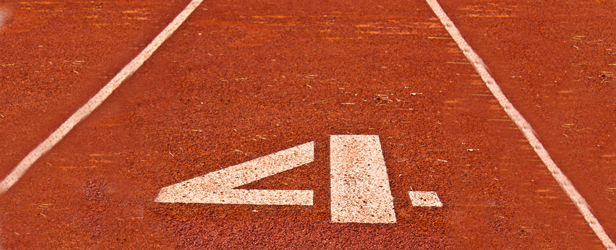
© Sritangphoto | Stock Free Images & Dreamstime Stock Photos
I don't typically use it in my marketing, but I consider myself America's most hardcore fitness professional. You say that you train the NHL's leading defense? Groovy. You have pro linebackers? Neat. UFC title contenders? Thumbs up. Ever have to worry about the welterweight biting down on your bicep so hard that it leaves dental impressions? I'm sure not even your rugby team has attempted that one.
For the past decade, I've devoted my fitness business entirely to the autism population. I was fascinated with the individuals on the “spectrum” with whom I'd been able to work and realized that nobody in the fitness realm had really focused on bringing strength into the lives of those with ASD. For the record, Special Olympics, while a fine organization, is not really the ideal environment for the autism crowd. Limited social skills and poor understanding of abstract concepts (see also: sports, winning, team activities) make it difficult for those with ASD to participate in such an event. But who needs that when you can overhead squat and have learned four medicine ball variations by the end of the day?
Fitness programming for the autism population is mostly similar, and yet a way bit different, than the general population. You're not just looking at and accounting for physical skills, but you are also taking into account adaptive (behavioral) and cognitive (learning styles) skills. Because we're still working with human movement and human behavior, there are a few concepts that transcend the world of autism and can be helpful additions, or at least considerations, for most coaches and trainers:
1. Generalization
In the practice of Applied Behavior Analysis (ABA), generalization refers to a skill or concept being used in different environments, with different people, and in different situations. Being able to do this with social contingencies (if—then relationships) is often difficult for those with ASD. I like to program generalization skills into my athletes' sessions. If they've mastered a squat while holding a medicine ball, how about trying it with a sandbag or a barbell?
Considering that none of my current athletes are entering a competitive Olympic or powerlifting competition anytime soon, it makes sense to develop movement patterns around a variety of equipment rather than the same object over and over. It provides new stimuli and can reinforce healthy physical performance and safety.
2. Objects versus Objectives
Got a really cool piece of equipment? Nice. I nerd-out on new strength and conditioning stuff, too. (In fact, I am the co-founder of a small equipment company because I couldn't stop designing new toys). But with very few exceptions (barbells and perhaps—perhaps—in some cases dumbbells and kettlebells), they are all tools in the box. You have to work around the abilities and needs of the athlete. Sometimes that means using dumbbells instead of a barbell for imbalances or impingement. In my case, sometimes it means using a Sandbell or sandbag instead of the dumbbells because I don't want my foot broken.
3. Behavior-Specific Praise
Want someone to perform optimally? “Great job” is too vague. However, “Excellent depth on the front squat” is much more helpful for a couple of reasons:
- It tells the athlete exactly what he/she was doing correctly and nothing that he/she was doing wrong.
- At any point there could be eight things that are moderately problematic with one of my athletes. I want to focus on the one or two things that are going well. When the focus is on the correctness, the likelihood of the correctness recurring increases. Seems theoretical, but the concept has been used successfully with a number of football teams as well as at the high school level.
4. There is a Balance between Chaos and Structure
Remember that thing about generalization and how it is a particularly difficult area for many individuals with autism? Some of the behaviors I observe on a regular basis include running back and forth across the room, rolling on the floor, and jumping up and down. The physical ability to perform the action is there, but the motivation to perform it in a more functional (using the actual definition here—not the standing-on-a-Swiss-ball-cable-pull rendition) way.
Teaching requires structure. There needs to be enough guidance, repetition, and skill development for mastery (independent performance) to occur. From mastery, I want chaos. I want my athlete to be able to use the skill in appropriate but random situations. That's my definition of active play, another area of particular deficit among those with ASD. How cool would it be if, on occasion, you could ask your athlete, “What do you want to do today?” If he/she can answer, it is likely that he/she has not only been paying attention while you drag him/her through squatting, pulling, pushing, and rotating, but he/she has also found some aspect of it motivating. Play requires motivation.
From chaos we go back to structure, and both can be occurring during the same session. Choosing to do a bear walk-to-hurdle jump-to-Sandbell slam combo is then followed by a carefully planned progression in learning pushups.
These examples may not correspond with your athletes or your own training, but the concepts just might. We're all human beings on different places along the same continuum. Sometimes a glance from an alternate angle can yield some damn good insight.









